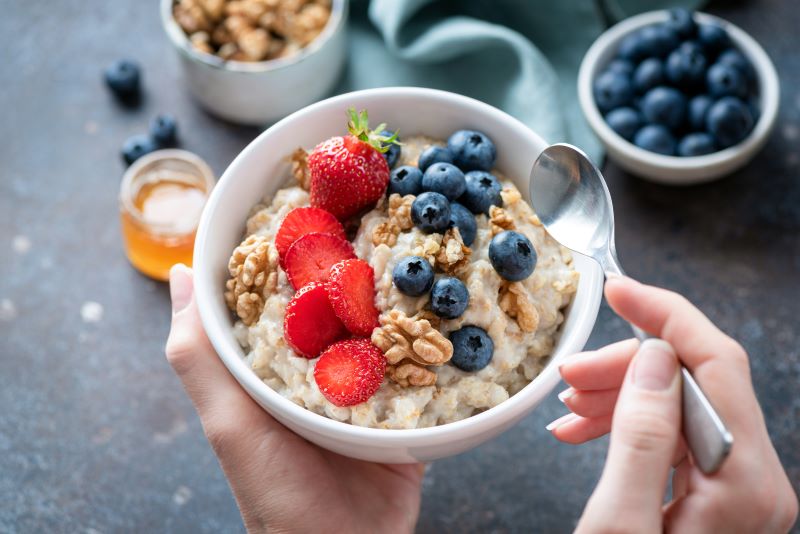What Are “Wellness Beverages,” and Can They Really Improve My Health?

The beverage market is flooded with what are known as “wellness” and “functional beverages.” These include energy drinks, sports drinks, electrolyte drinks, fortified waters, prebiotic and probiotic sodas, protein drinks, cognitive support beverages, adaptogen-infused (herbal) drinks, and even those claiming to enhance beauty.
These drinks are marketed for their potential health benefits—for example, enhanced energy and sleep, improved digestion, and stress relief. However, it’s important to note that these drinks are largely unregulated, and some may contain ingredients that could be harmful or unnecessary.

Taylor Stein, RD
In this Q&A, Taylor Stein, MS, RD, CDN, Associate Researcher and Registered Dietitian at Department of Environmental Medicine, Icahn School of Medicine at Mount Sinai, discusses what these beverages are and what to consider when buying them.
What are “wellness” and “functional” beverages?
These types of beverages are basically supplements in liquid form. They are designed to help you relax, get more fiber, reduce sugar intake (by swapping a higher sugar beverage for a low or no sugar added option), or get additional nutrients.
Common ingredients include vitamins and minerals, probiotics (live microorganisms), herbal extracts and adaptogens (including ginseng, ginger, turmeric, ashwagandha, and rhodiola), plant extracts like green tea, dietary fiber and prebiotics (non-digestible fibers), caffeine, electrolytes, and even fatty acids.
Do these products really improve my health?
Possibly, but there is no guarantee. They are produced by the food and beverage industry, not medical practitioners. They don’t replace healthy lifestyle habits around nutrition, exercise, and mental health. A drink containing ashwagandha may claim to reduce stress, for example. It might help temporarily, but it’s not a cure.
Are these drinks safe?
They are generally safe. However, if you’re taking medications for chronic conditions, it’s best to examine ingredient lists. These beverages are not regulated, and labels may not advise you about possible interactions with medications or other supplements you might be on. You want to consider any ingredients you shouldn’t have, depending on your medical condition(s) or medications you are taking, and look for ingredients that might conflict.
What should I look for in product labels and packaging?
Be curious about any ingredients that are unfamiliar. Look them up and make sure they are safe for you. And be wary of any product labeling claiming to treat or cure certain conditions, such as stress or sleep deprivation—while some supplements do have research to support their use, this could just be fancy marketing.
Specifically, check for:
- Added sugar and sugar replacements, like sugar alcohols, which can cause stomach upset
- Excessive caffeine: Some energy drinks contain more than 200 milligrams of caffeine—the amount found in a 16-ounce coffee, and about twice as much as what is recommend for adults by the Centers for Disease Control and Prevention. For some people, that much caffeine can cause heart, stomach, and sleep problems. Energy drinks can very sweet, so it’s easy to drink an unsafe amount.
- Any other ingredients that are excessive: For example, prebiotic sodas can contain fiber in high amounts, which may upset your digestive system, especially if you are not used to lots of fiber.
- Carrageenan: Often found in protein beverages, especially non-dairy varieties that have a creamy consistency, carrageenan is seen as safe in the food supply. But some people report stomach upset, and a form that is generally not used in food has been linked to an increased risk for cancer, so there is still ongoing research.
How often is it safe to consume these products?
They should be consumed in moderation—around once per day.
What beverages are best to consume for hydration?
Plain water should always be first. However, beverages containing electrolytes, especially when sweating, allow water to absorb into the bloodstream in a balanced way, which can aid hydration. Be sure to buy a beverage that includes a mix of electrolytes, such as potassium and magnesium. Keep in mind that many electrolyte beverages contain high amounts of sodium, an electrolyte, which can actually dehydrate you, so be mindful of the balance.
How can I know if I am dehydrated?
Look at your urine. If it’s pale yellow, you are getting enough. If it is dark, you are likely dehydrated. Generally, most people should drink about eight glasses of fluids a day, but we also get water from fruits, vegetables, and other foods, so it depends. Contrary to popular opinion, you can also drink coffee for hydration, though it contains plant compounds, known as tannins, that make your mouth feel dry.







